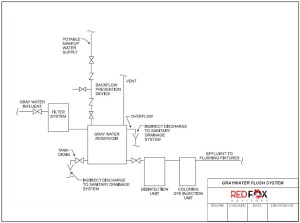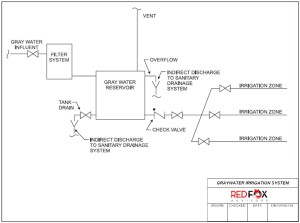Our focus on international water quality and resource management issues this month brings a stark reminder to those of us who live in developed countries where clean, safe, clear water flows effortlessly from municipal supplies at the turn of a tap: “We have a finite amount of water on this planet, and most of it is entirely unfit for human consumption.” A seemingly limitless supply of clean municipal water is testament to the hard working men and women involved in capture, storage, purification and distribution of water to homes, business and industry. They keep this precious resource flowing without fuss or fanfare, and we seem to have an infinite supply, limited only by how often we leave the faucet running. The truth, of course, is starkly different: We have barely enough for our needs, we’re wasting what we do have and many people around the world don’t have any at all. The solution to water shortages is very simple: water reuse.
Water reuse is the capture, storage, treatment and repurposing of waste water. Since much of our water usage leaves relatively clean waste, it is sensible to take the water and repurpose it for use in other applications. Naturally, the ‘ick’ factor comes into play when people hear terms like ‘toilet-to-tap’, or recycled water, but that is really a naïve and foolish outlook on a legitimate solution to a serious problem. Looking at water usage, there are four generally recognized levels of quality:
- Working water
- Washing water
- Drinking water
- Specialty water
Why should one use drinking quality water for plants or to flush toilets? That’s a waste of valuable treatment resources. It is relatively easy to reuse washing water and drinking water for working water applications, like irrigation, toilet flushing and general non-potable projects. One way that some people apply principles of reuse at home is simply routing their washing machine discharge to their garden. This technique, while seemingly low-risk, is actually fraught with potentially serious health-risks unless the water is properly treated and used sensibly. A washing machine is often home to significant bacterial, mold and fungal contamination, from both ambient air and biological soil in laundry (that’s why laundry usually smells bad when left overnight in a washing machine). When neophytes store or use this greywater without using appropriate treatment and safety precautions, they are creating a massive health risk for themselves and others. This is why so many municipalities have had a kneejerk reaction and simply banned laundry greywater reuse outright. Forward-thinking localities are implementing new codes that highlight the industry best-practices of greywater recovery to ease the burden on city infrastructure, and help homes and businesses do their part in using water wisely.
The drawing above shows a typical greywater reuse application where water is captured, stored, treated, dyed and then pressurized for reuse. This method is the most sensible and broadly-accepted way to safely reuse greywater for residential and industrial applications. Naturally, one must always remember that recovered greywater is still greywater, not drinking water, and should only be used where it is clearly marked as non-potable water. It should also never be used where it could aerosolize and expose humans to airborne contaminants. Landscape irrigation with greywater should be reserved to drip-style applications where the water emitter is covered by soil or mulching material (see drawing below).
Toilet-to-tap is the recovery of ‘black water'(water with a very high BOD and often containing fecal matter). There has been significant resistance to implementation of this practice, mainly due to misconception about how the technology works. Current best practices include progressive prefiltration stages and final-barrier technologies like ultrafiltration, in addition to germicidal UV radiation and oxidation to ensure removal of pathogens as well as significant reduction of complex organics like pharmaceuticals. Current technology ensures that this recovered water is cleaner and safer than many municipal supplies in use today.
Nations like Singapore are currently leading in large-scale implementation of recovered water (they call it NEWater there) where over 15 percent of their municipal water is recovered black water. In the US, California and New Mexico have allowed pilot plants where recovered water is either blended with existing municipal water or pumped back into aquifer to help maintain normal groundwater levels.
I know. You’re probably sitting there grimacing as you read about recycled water, but don’t forget: the hydrologic cycle is nature’s own recycling mechanism. Your water today might well have passed through the kidneys of a dinosaur at some point. Recovered and repurposed water is in your future. It’s a good thing – get used to it.

